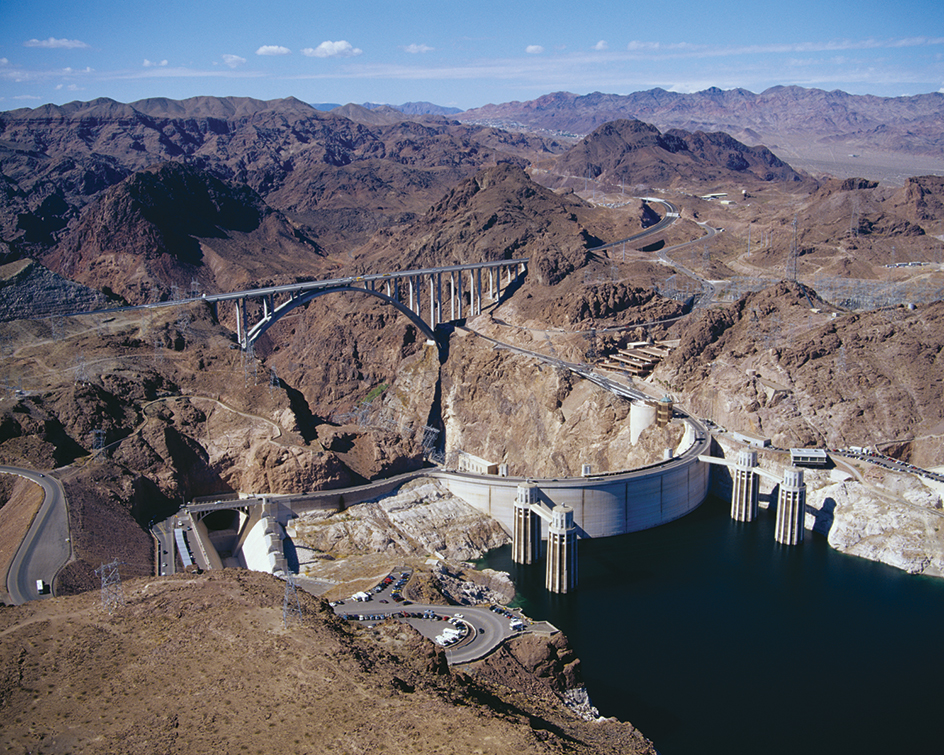Hoover Dam is one of the highest concrete dams in the world. It stands in the Black Canyon of the Colorado River. The dam is part of the Boulder Canyon Project. The project also includes a hydroelectric power plant and a reservoir. The project controls floods of the Colorado River. It also supplies water and electric power for much of the Pacific Southwest. The project is on the Arizona-Nevada border. The dam stands about 25 miles (40 kilometers) southeast of Las Vegas, Nevada. Hundreds of thousands of people visit the dam each year. The Mike O’Callaghan-Pat Tillman Memorial Bridge spans the canyon just south of the dam. The bridge was completed in 2010.

Hoover Dam is 726 feet (221 meters) high and 1,244 feet (379 meters) long. Elevators descend the equivalent of 44 stories into the dam. But they still do not reach its base. The concrete base is 660 feet (200 meters) thick. It contains enough concrete to pave a two-lane highway from New York City to San Francisco.
Lake Mead, the dam reservoir, is one of the world’s largest artificially created bodies of water. At its largest, it is about 115 miles (185 kilometers) long and 589 feet (180 meters) deep. The reservoir has the capacity to store approximately 28 million acre-feet (35 billion cubic meters) of water. Since the early 2000’s, however, drought and increased water usage have left the reservoir well short of capacity.
Water falling through the huge turbines of the dam generates electric power. The power is sold to industries and to cities in the Pacific Southwest. The power plant has a capacity of about 2 million kilowatts. Several power lines lead from the Boulder Canyon Project to the Los Angeles area of California. Generators at the dam supply much of the power consumed in Arizona, Nevada, and southern California. Water from Lake Mead can irrigate about 1 million acres (400,000 hectares) of farmland in the three-state area. The reservoir also supplies water for cities in southern California. The water flows through an aqueduct 240 miles (386 kilometers) long.
The need for a dam on the Colorado River was apparent in the early 1900’s. Floods were causing much damage in the Palo Verde Valley and in the Imperial Valley. Extensive levees were built. But crops died when the river ran too low to meet the area’s irrigation needs.
In 1928, Congress authorized the Boulder Canyon Project. The Bureau of Reclamation designed the dam and supervised its construction. The entire project cost about $385 million. The dam itself cost about $165 million. Hoover Dam was completed in 1935.

In 1931, the dam was named Hoover Dam to honor President Herbert Hoover. After he left office in 1933, the Department of the Interior began to call the dam Boulder Dam or Boulder Canyon Dam. Congress officially named it Hoover Dam in 1947.
Like many other large dams, Hoover Dam has had significant harmful impacts on the environment. For example, within nine years after the construction of the dam, the downstream riverbed had eroded by more than 13 feet (4 meters).
See also Dam; Lake Mead; Tillman, Pat.
